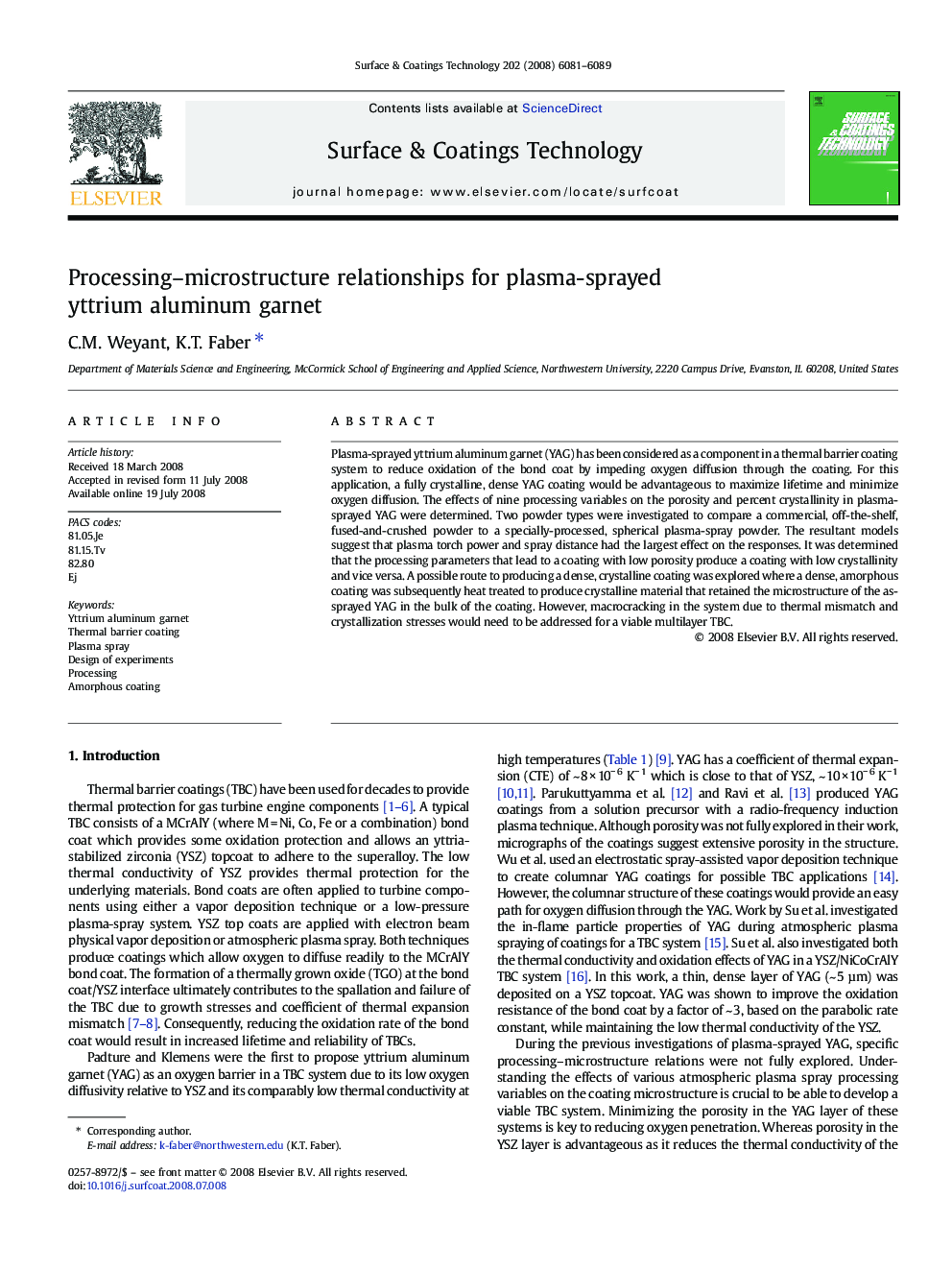| Article ID | Journal | Published Year | Pages | File Type |
|---|---|---|---|---|
| 1661323 | Surface and Coatings Technology | 2008 | 9 Pages |
Plasma-sprayed yttrium aluminum garnet (YAG) has been considered as a component in a thermal barrier coating system to reduce oxidation of the bond coat by impeding oxygen diffusion through the coating. For this application, a fully crystalline, dense YAG coating would be advantageous to maximize lifetime and minimize oxygen diffusion. The effects of nine processing variables on the porosity and percent crystallinity in plasma-sprayed YAG were determined. Two powder types were investigated to compare a commercial, off-the-shelf, fused-and-crushed powder to a specially-processed, spherical plasma-spray powder. The resultant models suggest that plasma torch power and spray distance had the largest effect on the responses. It was determined that the processing parameters that lead to a coating with low porosity produce a coating with low crystallinity and vice versa. A possible route to producing a dense, crystalline coating was explored where a dense, amorphous coating was subsequently heat treated to produce crystalline material that retained the microstructure of the as-sprayed YAG in the bulk of the coating. However, macrocracking in the system due to thermal mismatch and crystallization stresses would need to be addressed for a viable multilayer TBC.
